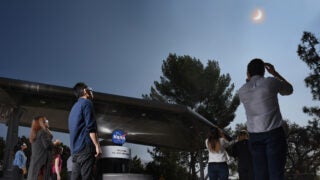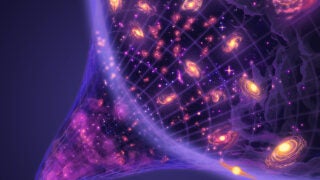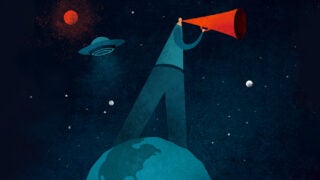Here’s where the skies will be clearest — and the surroundings most beautiful.
Astronomy
News Listing
The honor recognizes innovation that has a real impact on the welfare of society.
A USC Dornsife scholar of physics and astronomy answers questions about Pluto and other dwarf planets. These celestial bodies in our Solar System are cold, dark, far away and full of surprises.
We’ve been fascinated by the wonders of the universe and have endeavored to understand our place within it since our earliest ancestors first gazed up in awe at the night sky. That has USC experts asking: What did the ancients know?
From the origins of the Big Bang to the composition of dark energy, dark matter and black holes, cosmologists Vera Gluscevic and Elena Pierpaoli are searching for answers.
For many scientists, it’s no longer a question of “if” but “when.” What will happen when we finally come face to face with space aliens? USC experts look to the skies for answers.
From peering into deep space to looking for signs of life on Mars, Trojans are going where no human has gone before.
COVID-19 can’t stop a popular annual science outing run by USC physics and astronomy experts for curious and enthusiastic local teens.
Two new USC Dornsife general education courses offer students a richer, broader way to learn and to acquire diverse academic skills.
From the authors of classic literature to ancient astronomers, Earthlings have been captivated by Mars for as long as we can remember. USC experts help dissect our attraction to the red planet.










